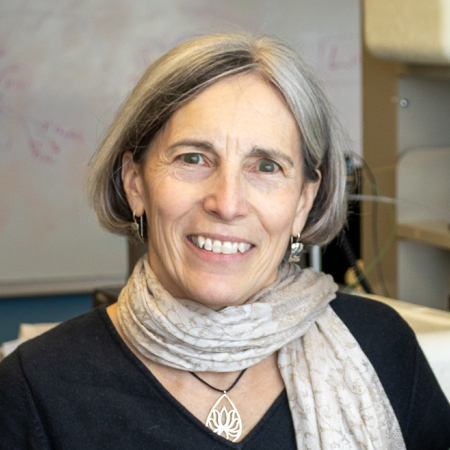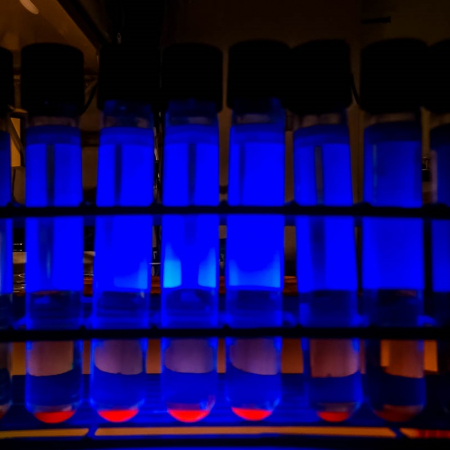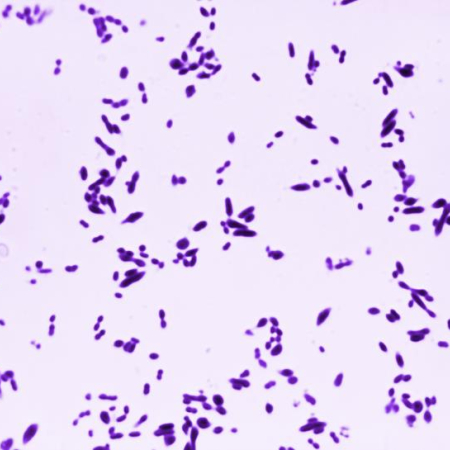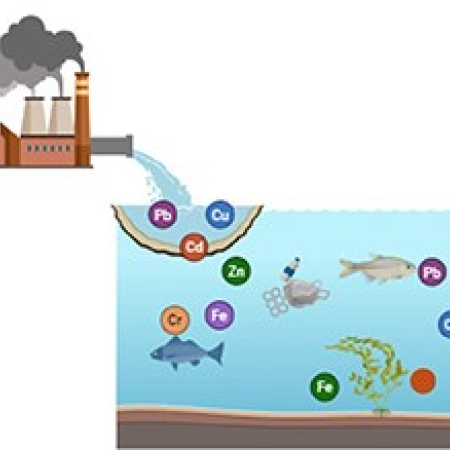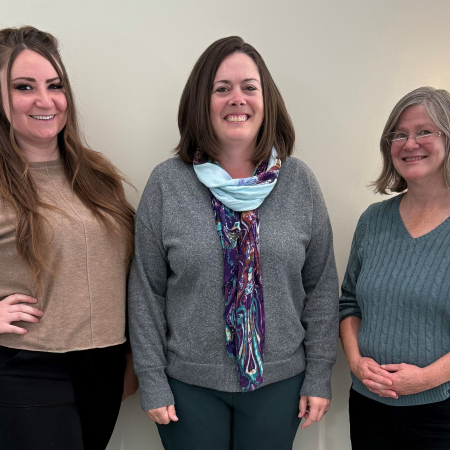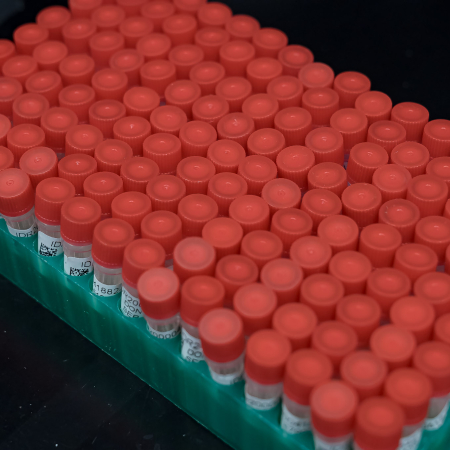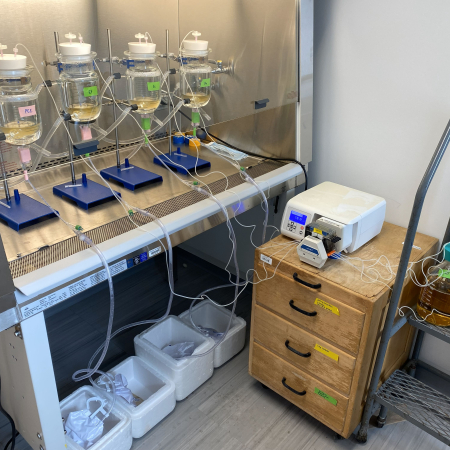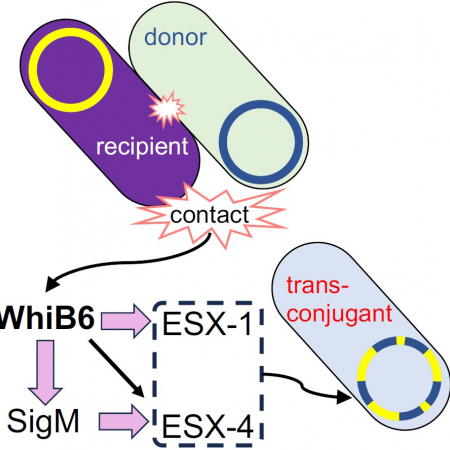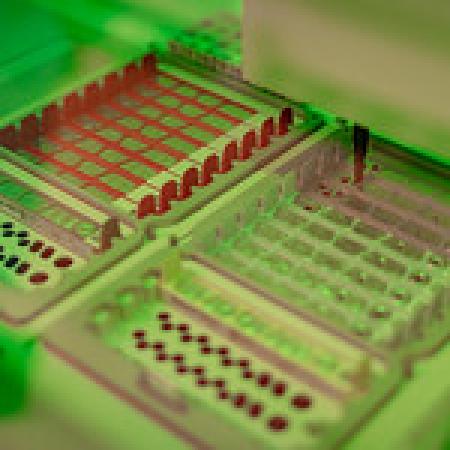Wadsworth Center Ceases Production of Environmental Biology and Chemistry Proficiency Test Samples
For more than 25 years, the Environmental Proficiency Test and Validation Unit (EPTAVU), of the Wadsworth Center’s Division of Environmental Health Sciences (DEHS), produced a comprehensive suite of environmental proficiency testing (PT) samples for hundreds of laboratories accredited through the New York State Department of Health’s Environmental Laboratory Approval Program (ELAP).
READ MORE about Wadsworth Center Ceases Production of Environmental Biology and Chemistry Proficiency Test Samples Wadsworth Center Presentation to Washington University School of Medicine in St. Louis
Dr. Janice Pata, Director of the Wadsworth Center’s Division of Scientific Cores, delivered a virtual seminar to the Department of Biochemistry and Molecular Biophysics at Washington University School of Medicine in St. Louis on December 9, 2025.
READ MORE about Wadsworth Center Presentation to Washington University School of Medicine in St. Louis Wadsworth Center Research Presented at Prestigious Union World Conference on Lung Health
The Wadsworth Center’s tuberculosis (TB) testing program for Mycobacterium tuberculosis is among the leading diagnostic programs in the United States and is internationally recognized for its scientific excellence and public health impact. Senior scientists from the program are regularly invited to participate in major international meetings, reflecting its global leadership in TB diagnostics and surveillance.
READ MORE about Wadsworth Center Research Presented at Prestigious Union World Conference on Lung Health Wadsworth’s Participation in Newborn Screening Pilot Study Recognized in JAMA “Research of the Year” Roundup
The Journal of the American Medical Association (JAMA) has recognized the GUARDIAN study as one of the nine most impactful, newsworthy, or novel research studies published in the past year. This distinction places GUARDIAN among JAMA’s annual “Research of the Year” selections, highlighting its significance to medicine and public health.
READ MORE about Wadsworth’s Participation in Newborn Screening Pilot Study Recognized in JAMA “Research of the Year” Roundup Wadsworth Center Scientist Participates in National APHL Newborn Screening Committee Meeting
On December 3–4, 2025, Dr. Joseph Orsini, PhD, of the Wadsworth Center, participated in the Association of Public Health Laboratories’ (APHL) annual Newborn Screening (NBS) Face-to-Face Committee Meeting in Bethesda, Maryland. Dr. Orsini serves as Co-Chair of the national NBS Committee, which provides guidance, develops best practices, and addresses emerging challenges to ensure high-quality newborn screening programs across the United States.
READ MORE about Wadsworth Center Scientist Participates in National APHL Newborn Screening Committee Meeting Increasing Automation in the Wadsworth Center’s Genomic Sequencing Core
The Advanced Genomics Technology Cluster (AGTC) Core at the Wadsworth Center is continuing to expand its automation capabilities to support both research and clinical sequencing workflows. As part of this effort, hands-on, advanced technical training is essential to ensure the Center can independently maintain and optimize these high-throughput systems.
READ MORE about Increasing Automation in the Wadsworth Center’s Genomic Sequencing Core Wadsworth Participates in the 9th European Study group for Legionella Infections (ESGLI) Meeting
The Wadsworth Center’s Division of Infectious Disease was prominently represented at the 9th European Study Group for Legionella Infections (ESGLI) Meeting, held in Palermo, Italy, from November 12-14, 2025. Danielle Wroblewski, a scientist in the Food and Waterborne Unit of the Bacterial Diseases Laboratory, was invited to deliver two presentations showcasing research conducted at the Wadsworth Center to advance the detection of Legionella in both human and environmental samples.
READ MORE about Wadsworth Participates in the 9th European Study group for Legionella Infections (ESGLI) Meeting NYSDOH Selected to Participate in Global Pneumococcal Vaccine Study
The New York State Department of Health’s Wadsworth Center and Division of Epidemiology have been selected to participate in a major multinational study evaluating the effectiveness of a pneumococcal vaccine currently licensed in Europe. The study fulfills a post-authorization requirement of the European Medicines Agency (EMA) and brings together leading public health institutions from Europe, the Americas, and Israel.
READ MORE about NYSDOH Selected to Participate in Global Pneumococcal Vaccine Study Environmentally Friendly Trace Metal Extraction Method Developed at the Wadsworth Center Eliminates the Use of Concentrated Acids
A research team at the Wadsworth Center has developed an innovative, environmentally friendly method for extracting trace metals from biological samples without the use of concentrated mineral acids. Led by Dr. George Donati, Deputy Director of the Laboratory of Inorganic and Nuclear Chemistry, the study demonstrates a safer, greener alternative to conventional digestion techniques used in environmental, toxicological, and food safety testing.
READ MORE about Environmentally Friendly Trace Metal Extraction Method Developed at the Wadsworth Center Eliminates the Use of Concentrated Acids Wadsworth Center Creates Path for Hospital-at-Home and Clinical Testing in New York State
The Clinical Laboratory Evaluation Program (CLEP) within the Wadsworth Center has taken an important step to support the expansion of Hospital at Home (HaH) services in New York State. CLEP, which has regulatory oversight authority for all clinical laboratories under Article 5, Title 5 of the New York State Public Health Law (PHL), ensures that any facility performing tests on human-derived materials meets state standards for quality and safety. This authority applies not only to hospital-based laboratories but wherever testing is performed – including at home.
READ MORE about Wadsworth Center Creates Path for Hospital-at-Home and Clinical Testing in New York State Wadsworth Center’s Newborn Screening Program DNA Laboratory Hosts Senior Pathology Residents from Albany Medical Center
Three senior pathology residents from Albany Medical Center participated in a two-day rotation in the Wadsworth Center’s Newborn Screening Program DNA Laboratory, where they observed workflows, gained hands-on experience, and learned about the genetic testing that supports New York State’s comprehensive newborn screening program.
READ MORE about Wadsworth Center’s Newborn Screening Program DNA Laboratory Hosts Senior Pathology Residents from Albany Medical Center Wadsworth Center Well Represented at Radiobioassay and Radiochemical Measurements Conference
The Wadsworth Center had a strong presence at the 68th Annual Radiobioassay and Radiochemical Measurements Conference, held the week of November 2, 2025, in Idaho Falls. This annual meeting serves as a leading scientific forum for advancing technologies in the detection, measurement, and analysis of radioactive materials.
READ MORE about Wadsworth Center Well Represented at Radiobioassay and Radiochemical Measurements Conference Wadsworth Center Expands National Arbovirus Testing Capacity to Address CDC Gaps
Due to limitations in arbovirus testing at the Centers for Disease Control and Prevention (CDC), the Wadsworth Center’s Viral Encephalitis Laboratory, Diagnostic Immunology Laboratory and Arbovirus Laboratory have been under federal contract since April to provide diagnostic testing for patients across the United States.
READ MORE about Wadsworth Center Expands National Arbovirus Testing Capacity to Address CDC Gaps Wadsworth Center Publication in Nature Communications: Identifying Microbial Metabolites to Fight Infections
Dr. George Donati, Deputy Director of the Laboratory of Inorganic and Nuclear Chemistry at the Wadsworth Center, recently co-authored a study led by Professor Chelsie Armbruster of SUNY Buffalo.
READ MORE about Wadsworth Center Publication in Nature Communications: Identifying Microbial Metabolites to Fight Infections Wadsworth Center Publishes Discovery of a Key Signaling Protein in Mycobacteria
A new study from the Wadsworth Center and collaborators identifies a protein that regulates cell-to-cell communication in mycobacteria. The paper, titled “WhiB6 Transduces Contact-Dependent Signaling in Mycobacterium smegmatis and Coordinately Induces Both ESX-1 and ESX-4,” has been accepted for publication in the top tier journal, Molecular Microbiology.
READ MORE about Wadsworth Center Publishes Discovery of a Key Signaling Protein in Mycobacteria Dr. Rajendra Agrawal Presents at the “Mechanisms and Milestones in Translation” Symposium
Dr. Rajendra Agrawal of the Wadsworth Center was invited to speak at the Ehrenberg–Liljas Symposium on Mechanisms and Milestones in Translation, held at Uppsala University, Sweden, on October 27–28, 2025. The meeting honored the pioneering contributions of Professors Måns Ehrenberg and Anders Liljas, both distinguished ribosome biologists and former members of the Nobel Prize Committee.
READ MORE about Dr. Rajendra Agrawal Presents at the “Mechanisms and Milestones in Translation” Symposium The Wadsworth Center’s Dr. Kurunthachalam Kannan Honored as Outstanding Researcher at University at Albany Research and Education Week
Dr. Kurunthachalam Kannan, Deputy Director of the Division of Environmental Health Sciences at the Wadsworth Center and Professor at the University at Albany, was recognized as an Outstanding Researcher during the university’s annual Research and Education (R&E) Week Awards Ceremony held on Friday, October 31. This year’s R&E Week theme, “Celebrating Research from Innovation to Impact,” highlighted the transformative role of research in improving communities and advancing public health.
READ MORE about The Wadsworth Center’s Dr. Kurunthachalam Kannan Honored as Outstanding Researcher at University at Albany Research and Education Week Wadsworth Center Co-Hosts Wastewater Surveillance Summit
The Wadsworth Center, in collaboration with the Center for Environmental Health and Syracuse University, hosted a Wastewater Surveillance Summit on October 23. The event brought together experts from public health, academia, and research organizations to discuss innovations, share experiences, and explore future directions in wastewater-based surveillance.
READ MORE about Wadsworth Center Co-Hosts Wastewater Surveillance Summit Wadsworth Center Researcher Abhishek Jain, PhD Recognized for Contributions to the Field of Bioanalysis Made During Time at Yale, Uppsala and Nanyang Technological Universities
Dr. Abhishek Jain is a newly recruited investigator in the Wadsworth Center’s Division of Environmental Health Sciences, and has been selected to receive The Bioanalysis Rising Star award recognizing the most promising early-career scientists in the field of bioanalysis. The vision of this award is to promote the work of highly talented researchers, offering a springboard to help establish themselves in the exciting world of bioanalysis. This award recognizes Dr. Jain’s overall contributions to the field of bioanalysis over the past 10 years.
READ MORE about Wadsworth Center Researcher Abhishek Jain, PhD Recognized for Contributions to the Field of Bioanalysis Made During Time at Yale, Uppsala and Nanyang Technological Universities Revised Remote Activities Policy
Click here for the October 2025 revision to the remote activities policy.
READ MORE about Revised Remote Activities Policy 
